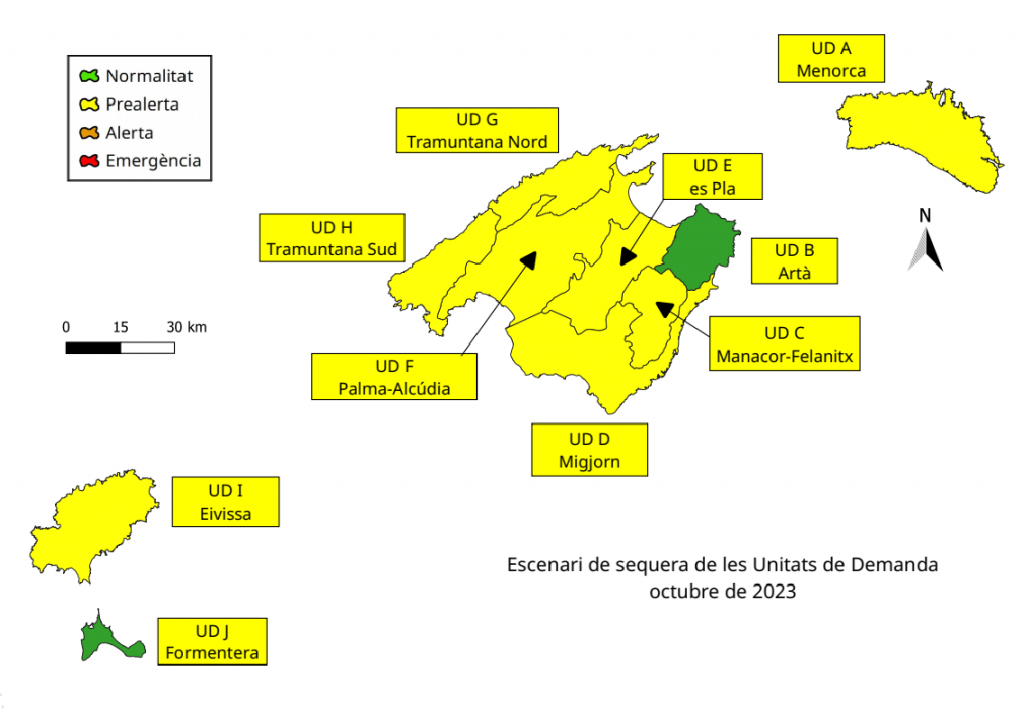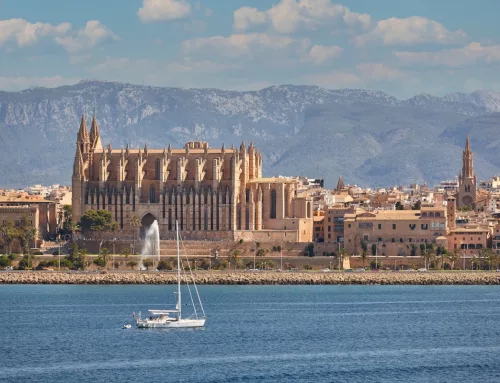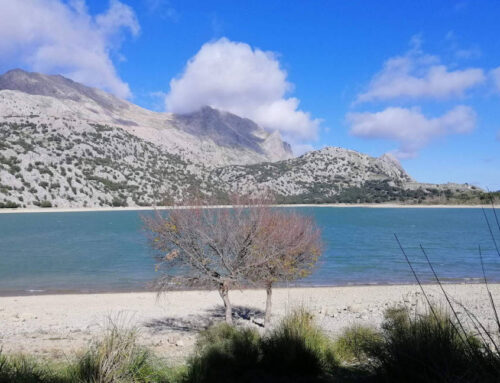The Balearic Islands have registered a positive increase in their water reserves during the month of October, reaching 54%. This represents an improvement on the 52% of the previous month and an increase of six percentage points compared to last year (48%). In detail by islands, Majorca has experienced an increase in its bookings, going from 54% to 55%. On the other hand, Menorca and Eivissa suffered slight decreases, falling from 50% to 49% and from 42% to 41%, respectively. These changes reflect the natural variability and challenges inherent to water management in an island environment.

The evolution of the Demand Unit Index (UD) has been mixed this month. Five UDs experienced decreases: Artà, Pla, Tramuntana Sud, Eivissa and Formentera, while two UDs, Migjorn and Tramuntana Nord, recorded increases. Three UDs have remained stable: Menorca, Manacor-Felanitx and Palma-Alcúdia. Despite these fluctuations, almost the entire territory (98.4%) is in a pre-alert situation. The only exception is the UD de Formentera, which is in an alert situation.
The general situation of the demarcation has shown a slight improvement with an index of 0.447, slightly higher than last year (0.428) and only slightly lower than two years ago (0.452). There have been no significant changes in the scenario, with eight DU in pre-alert and two (Artà and Formentera) in normal conditions.
In terms of rainfall, October was considered dry in the Balearic Islands, with 40.9 l/m² compared to the historical average of 73.8 l/m². By islands, Mallorca recorded 48.0 l/m² (compared to 77.6 l/m²), Menorca 40.0 l/m² (compared to 69.7 l/m²), Eivissa 2.5 l/m² (compared to 58.2 l/m²) and Formentera 3.0 l/m² (compared to 41.5 l/m²).
Temperatures in October were very high in the Balearic Islands, with an average of 21.1ºC and an anomaly of 2.2ºC.






Leave A Comment